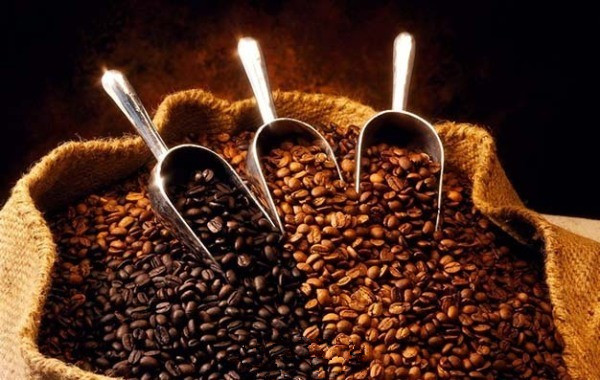The best in coffee
According to reliable statistics, the average daily coffee consumption in the world exceeds 1 billion cups, and hundreds of billions of cups are consumed a year. In 2000, the statistics were 400 billion cups. Therefore, coffee has always been the second largest trading commodity in world trade after oil.

1 "Coffee of the highest quality" Blue Mountain
Coffee is a cluster of purple-red berries (also known as coffee cherries) nuts dried products, after cultivation, picking, peeling, drying, grinding, blending and other processing, finally become a cup of drink. Different types of coffee exude different aromas, caramel flavor, charcoal roast flavor, chocolate flavor, fruity flavor, grass flavor, malt flavor, cocoa flavor and so on.
World-renowned coffee has Jamaica Blue Mountain, Indonesia Civet, Hawaii Kona, Arab Mocha, Colombia Medellin and so on. There are now 35 major coffee producing countries in the world.
Every year, in Brazil, Kenya, Indonesia, Colombia and some well-known world trade center cities such as New York, London, Tokyo, etc., famous coffee grading and auction transactions are held, at this time buyers always gather. Prices for premium coffees have remained high, with premium products selling for about $350 a pound and annual spreads often as small as $1 to $3.
Among the many famous coffees, authentic Jamaica Blue Mountain Coffee is named after growing in the Blue Mountain area above 3000 meters above sea level. It has all the characteristics of coffee, with the best blend of perfect three flavors (sweet, sour and bitter). It tastes rich and rich, rich and moderate. It is the most famous and expensive coffee variety in the world. It has been called "coffee quality" and buyers flock to it.
Blue Mountain coffee production is limited, only about 40,000 kilograms per year. For a long time, its preferential purchase right has been won by Japan, 90% of Blue Mountain coffee is sold only to Japan, and other countries can only share the remaining 10%. Therefore, many Blue Mountain coffees around the world today are only similar or counterfeit. Genuine Blue Mountain coffee, regardless of price, is always in short supply.
In addition, Indonesia's "civet coffee"(also known as "cat feces coffee") is also a rare variety. It is to feed coffee beans to civet "Ruwaka", so that coffee beans in its stomach fermentation, and then collect civet feces, recycling coffee beans for processing. Due to its low production, the rare and expensive "civet coffee" sells for up to $200 50 grams, while 50 grams can only be brewed for four or five cups, each worth $50, which is like gold.
2 Wild coffee in Hawaii
The dominance of traditional brand coffee was finally broken one day. For several consecutive years since 1995, a product extracted from wild coffee beans from Hawaii in the United States has won consecutive championships at local and Tokyo grading conferences, and has been rated AA++ or above. All quality indicators and prices have also surpassed Blue Mountain. In two or three years, it has become the "lady of the world coffee family."
This is one of the most beautiful coffee beans in the world, full of particles and bright luster. Because it grows on top of Hawaii's volcanoes, the unique volcanic climate produces its unique aroma. The reviewers agreed that it tasted wet and smooth, with moderate alcohol, rich aroma and a long aftertaste. The best part is that it also has a mixture of wine, fruit and spices, just like the colorful colors of this volcanic archipelago in the Pacific Ocean.
Since then, wild coffee produced in the Philippines, Indonesia and Kenya has also appeared in the market one after another, gradually becoming known to the world. Wild coffee, natural coffee, and native coffee became new terms in the coffee industry, with prices reaching staggering levels of $250 and 50 grams. For coffee lovers who are keen to hunt for novelty and pursue good taste, tasting a cup of wild coffee has become a dream.
Wild coffee mostly grows in the mountains above 1500 meters above sea level, completely depends on natural conditions to grow, only spring and rain moisture, mature slowly, but because of full growth, there is no bitter taste of the usual field cultivation varieties. However, it is extremely difficult to collect wild coffee. Mountain people need to set foot in the mountains and even domesticated goats to help find it. They pick it before it ripens and falls back to the factory for processing. In the early years, mountain people collected wild coffee and only picked up ripe fruits that fell to the ground, which greatly reduced the quality and taste.
3. Coffee is popular.
The emergence of wild coffee has led to a trend of returning to the original in traditional coffee cultivation and taste pursuit. In recent years, shady coffee cultivation has become popular.
Traditional field coffee cultivation, in order to achieve the purpose of high yield, generally follow the following process: pioneering, weeding, sterilization, leveling, irrigation, fertilization, pest control, ripening, a large number of fertilizers, herbicides and pesticides, coffee fruit will be more or less residual with these chemical components, adverse health, but also affect the taste. Especially in large coffee plantations, trees have been felled and exposed to strong sunlight for many years. Coffee grows and ripens faster than its natural ripening, and nutrients are insufficient, resulting in a large difference in taste compared with wild coffee.
The ideal cultivation model for maintaining the natural taste of coffee has been recognized and promoted worldwide in recent years. The planting pattern is as follows: choose high terrain and fertile soil areas, pay attention to retaining trees, especially those that attract birds, plant coffee under trees, use shade to avoid direct sunlight, make it a shade plant, that is, try to make coffee grow close to the original ecology and integrate into the wild system.
During the growing period, it relies on bird pest control, nitrogen fixing bacteria, bird droppings and fallen leaves in the soil as fertilizer, no fertilizers, herbicides and pesticides, and only a properly controlled irrigation system. In addition, according to natural conditions, scattered and small-area cultivation is used.
The coffee of the Galapagos Islands in Ecuador is now recognized as the ideal natural coffee. The country uses a small lake with abundant fresh water on the island at an altitude of 410 meters to form several streams of water flowing along the volcanic slopes, so that the mineral-rich fresh water nourishes the coffee plantations on the island and keeps the soil moist and fertile. The government has also declared the islands a national park, preserving only coffee cultivation, no new land reclamation, and banning the use of fertilizers, pesticides, and herbicides.
Kenyan coffee cultivation has been under new rules since five or six years ago, allowing it to be grown only at altitudes above 1500 meters. There is a rule that only two harvests are allowed in a year. To ensure that only ripe berries are picked, professionals patrol the woods.
The government also encourages small farmers to grow coffee. After harvesting the fruit, the fresh beans must be sent to designated stations for inspection and cleaning, and then the washed and dried coffee will be returned to the growers for subsequent processing, which can ensure the diversity and uniqueness of coffee taste. Kenya's natural coffee is known worldwide for its soft, rich flavor and is known as "gourmet coffee."
Important Notice :
前街咖啡 FrontStreet Coffee has moved to new addredd:
FrontStreet Coffee Address: 315,Donghua East Road,GuangZhou
Tel:020 38364473
Related
- Guji coffee producing area of Guji, Ethiopia: Humbela, Shakiso, Wulaga
- What is the most expensive variety of Qiloso in BOP multi-variety group?
- How to store the coffee beans bought home?
- Why are Yemeni coffee beans so rare now?
- Ethiopian Sidamo all Red Fruit Sun Sun Santa Vini Coffee beans
- SOE is mostly sour? What does it mean? Is it a single bean? what's the difference between it and Italian blending?
- Is Italian coffee beans suitable for making hand-brewed coffee?
- How to choose coffee beans when making cold coffee? What kind of coffee beans are suitable for making cold coffee?
- Just entered the pit to make coffee, what kind of coffee beans should be chosen?
- Can only Japan buy real Blue Mountain Coffee? What are authentic Jamaican Blue Mountain coffee beans?



